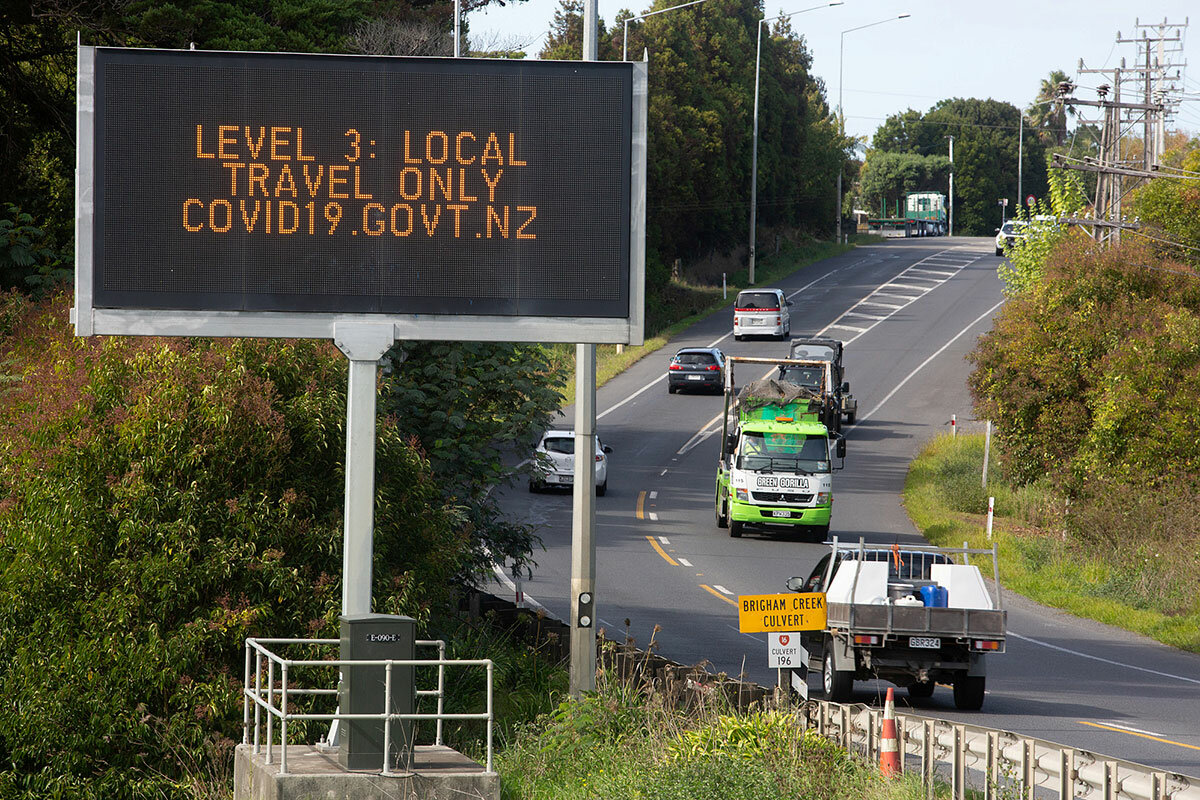Border-hopping without bubble-popping: A new COVID-19 strategy?
Loading...
| London
There’s an unlikely sounding new word in the COVID-19 lexicon that we’re likely to hear a lot more in the weeks ahead. And it reflects the mix of eagerness and apprehension with which countries worldwide are starting to reopen their economies in the age of the coronavirus.
The word is “bubble.” And the hope is that it will help restore some measure of international normalcy and limit the devastating economic effects the pandemic is having around the globe.
The word began its COVID life as part of a strategy for curbing the spread of the virus at the local level – from one household “bubble” to another. Yet now the idea is to create carefully defined “travel bubbles” to restore COVID-ruptured links between those countries that have weathered, avoided, or beaten back the worst of the pandemic.
Why We Wrote This
Travel bubbles incorporating low-threat countries – self-contained safety zones – could encourage businesses disrupted by COVID-19. But they pose monitoring challenges, and could test fundamental political relationships founded on unity.
The bubble concept got its start in the Pacific island nation of New Zealand, which has dealt with COVID-19 as successfully as any country in the world. With a population of nearly 5 million, it has had fewer than two dozen deaths.
Prime Minister Jacinda Ardern, with a mix of straight-talking urgency and empathy, convinced New Zealanders to think of each of their own households as bubbles. She stressed the danger of “popping the bubble” – both to themselves and their neighbors.
Then, earlier this month, with new cases there and in neighboring Australia down to a trickle, she floated the idea of a quarantine-free “trans-Tasman travel bubble” that might allow both countries to emerge from isolation – and, crucially, restart a deep-frozen tourism industry important to both economies.
Details still remain to be worked out: things like agreed testing arrangements and, presumably, provisions to deal with any new flare-ups or hot spots in either country. There have been suggestions that a New Zealand-Australia bubble might also expand to include other low-case Asian countries like Singapore and Taiwan.
Given the economic importance of tourism and its associated industries – airlines and airports, hotels and shops and restaurants – the travel bubble idea is fast catching on elsewhere.
In Europe – where tourism is not only economically important but, in some states, critical – things are moving even more quickly.
Last week, the Baltic states of Latvia, Lithuania, and Estonia, with a total of fewer than 150 lives lost to COVID-19, became the first to implement a travel bubble. Fellow European Union neighbors Finland and Poland, which have fared only slightly worse, may also be brought in.
Austria has signaled its intention to embark on a similarly selective opening to visitors, initially from Germany and the Czech Republic.
Even Britain, still struggling with its COVID outbreak and having formally left the EU, seems taken by the travel bubble idea. Transport Secretary Grant Shapps this week floated the possibility, once the crisis at home was brought under control, of instituting “air bridges” to allow visitors from low-risk countries in the EU and beyond.
Nowhere in Europe is the need for such arrangements more urgent than on the EU’s Mediterranean flank. The economies of countries like Italy, Spain, Portugal, and Greece are especially dependent on tourism.
Greece was among the first EU members to deal with the pandemic and proved one of the most effective. It has lost only around 160 lives to the virus. But the summer holidays are approaching and international travel is at a virtual standstill. Greece will face catastrophic economic consequences if foreign tourists cannot get to its beaches and classical ruins.
Greek officials have been consulting with several largely COVID-free countries – including Austria, Germany, Israel, and the neighboring island of Cyprus – with a view to reopening “travel corridors” of its own.
Two major obstacles have appeared on the path of the travel bubble. The first is practical: how to ensure that only residents of countries – or perhaps regions of countries – where COVID cases are low take advantage of the bubbles, and how to guard against new outbreaks.
The other obstacle is institutional, illustrating how the pandemic has placed deep strains on international governance as individual states focus on safeguarding their own populations.
Earlier this month, two European academics proposed dividing up Europe into sub-national regions – “green zones” where COVID is rare and “red zones” where it is still dangerous. Residents of green zones would be allowed to travel to other green zones.
They urged the EU to adopt and promote such innovative travel arrangements, especially since their effectiveness could well depend on EU-wide agreements on how to implement and monitor them.
The EU has always recoiled at arrangements that would undermine its emblematic commitment to union-wide freedom of travel. Last week, the union’s home affairs minister told the European Parliament: “Member states cannot open borders for citizens from one EU country, but not from others.”
But the economic realities – and the need to prevent travel from countries still struggling with COVID-19 – make it almost inevitable that the Baltic travel bubble will prove to be only the first among EU states.
The political challenge for the EU may now be to accommodate itself to such new pandemic realities, even at the cost of bending its rules and adapting its principles.







